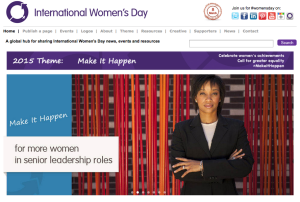Put some women on your team
 March 8th is International Women’s Day. That got me thinking about a podcast I listened to the other day on NPR’s On Point radio program with Tom Ashbrook. The podcast specifically talked about how to build a smarter team and one of its suggestions was to add women to your team.
March 8th is International Women’s Day. That got me thinking about a podcast I listened to the other day on NPR’s On Point radio program with Tom Ashbrook. The podcast specifically talked about how to build a smarter team and one of its suggestions was to add women to your team.
As many of us know from direct personal experience, working with teams can range from incredibly frustrating to incredibly awesome. It all depends on the team and how well team members interact.
The podcast discussed recent research about how the involvement of women generally improves teams, making them smarter and more effective overall.
It wasn’t an issue of intellectual horsepower. It’s not that women are more intelligent or have higher IQs than their male counterparts.
What the podcast’s guests argued was that teams which have better social and emotional awareness generally do better. And it happens that based on a few objective tests, women tend to score well on ability to read the feelings of others. That often makes them good at understanding what’s happening socially within a team and fostering better communication among team members.
An ideal team member, male or female, will be able to read the emotions of others and take them into account during the team’s time together. With more social intelligence, a “smart” team member can make better decisions that consider a bigger picture and how everyone on the team fits in and contributes. That same team member might be better at eliciting input from the shyer, but brilliant people on the team while preventing those with the more dominant personalities from taking over. They can also better assess any social impacts that will be made by the of the team’s decisions.
So next time you’re part of a team, look around and see how many men and how many women there are. If your team is predominantly or all men, maybe it’s time to suggest bringing in some women?
Contact me any time at Sue.George.Communications@gmail.com to discuss your organization’s marketing and communications needs.

